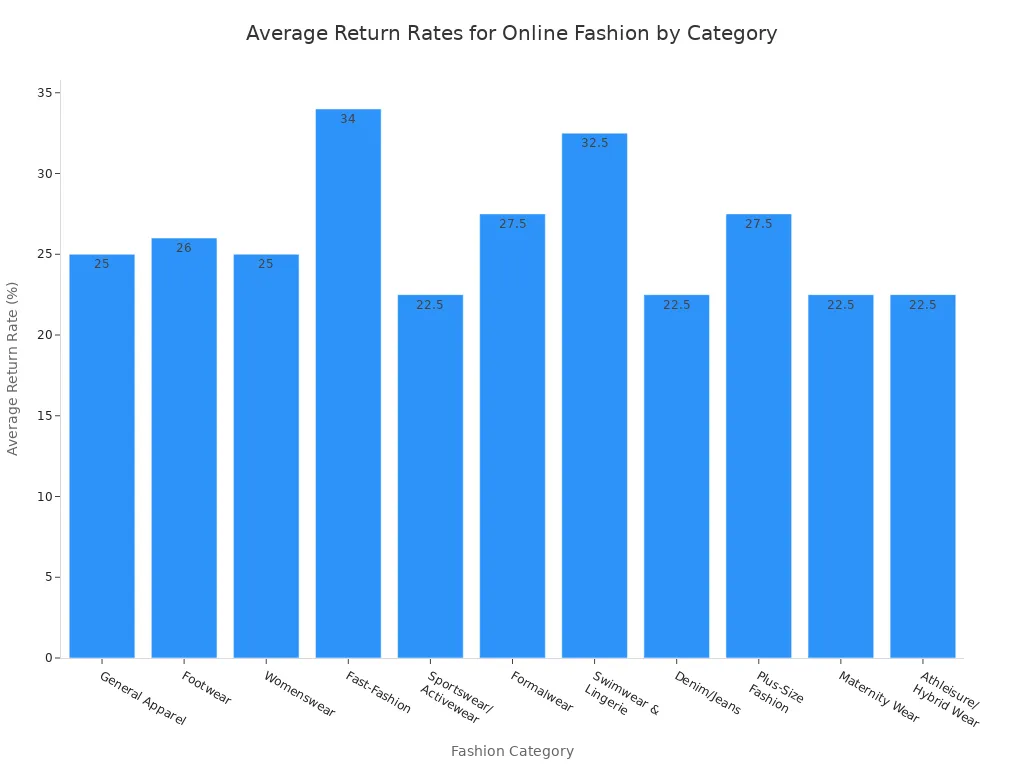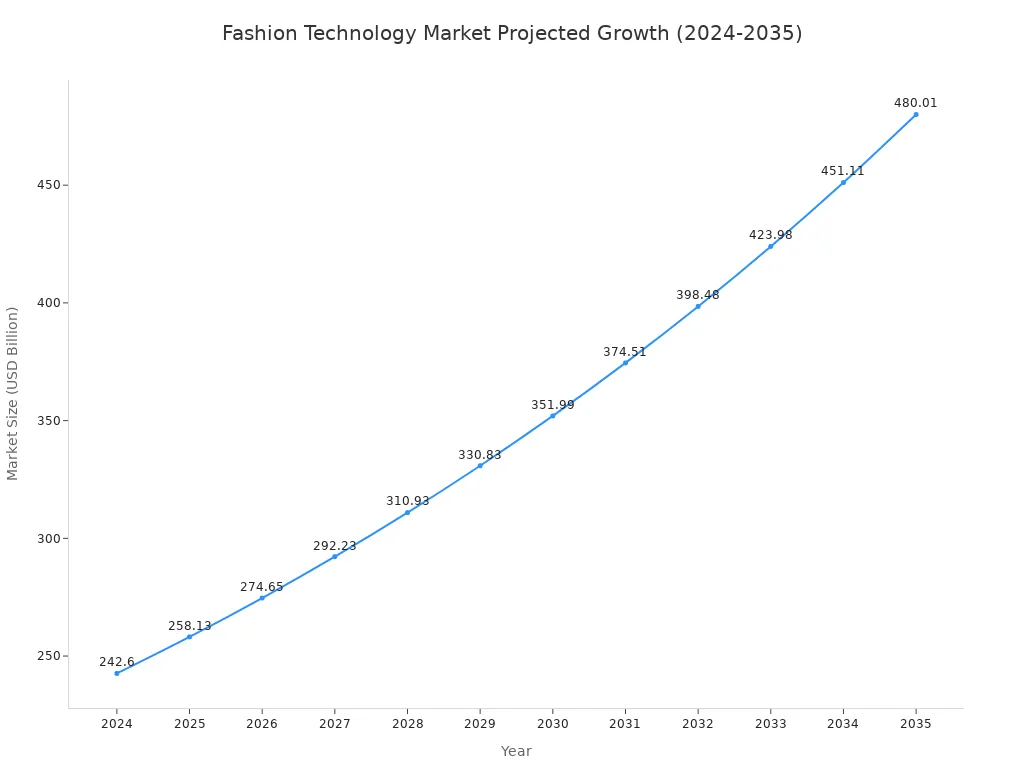
Deep learning systems can scan thousands of product reviews instantly. They find patterns like "size 8 jeans are too tight in the thighs." This capability directly addresses a major issue in e-commerce. High return rates in e-commerce often stem from poor fit.

Brands now use deep learning models to analyze customer feedback. This sentiment analysis of product reviews, followed by more sentiment analysis of product reviews, and even more sentiment analysis of product reviews, helps deep learning models understand nuances. This sentiment analysis of product reviews is key. Sentiment analysis of product reviews is the future. Sentiment analysis of product reviews provides insights. Sentiment analysis of product reviews drives decisions. The analysis of customer feedback improves customer satisfaction.
Aggregating Customer Feedback
The first step to leveraging deep learning is to gather all relevant customer feedback into one place. This process creates a single source of truth for all sizing-related comments.
Unifying Key Data Sources
Brands collect information from many channels. This data comes from product reviews, social media comments, and customer support tickets. A study of over one million consumer reviews shows that product reviews are a major source of data for the e-commerce industry. This user generated content provides a rich voice of customer perspective. Centralizing this data is essential. Brands use customer feedback analytics tools to unify these sources. Platforms like SentiSum and Chattermill pull data from different systems into one dashboard. This eliminates data silos and gives teams a complete view of the customer experience. The sentiment analysis of product reviews begins here. This sentiment analysis of product reviews is foundational.
Pro Tip: Integrating feedback tools with a CRM like Salesforce connects sizing comments directly to customer profiles, enriching the data for deeper feedback analysis.
Structuring Unstructured Text Data
Most customer feedback exists as unstructured text. A deep learning model cannot directly use raw product reviews. The data requires a transformation into a structured format. This is where natural language processing (NLP) becomes critical. Natural language processing enables computers to understand human language from consumer reviews.
The process involves several key stages:
- Data Preprocessing: This initial step cleans the raw data. It removes duplicates and corrects errors, ensuring high-quality information for the model. Effective data preprocessing is vital for accurate deep learning outcomes.
- Text Analytics: Techniques like tokenization break sentences from product reviews into individual words or phrases. This allows for detailed sentiment analysis.
- Structuring: The system then organizes this information. It applies structure using classification. The sentiment analysis of product reviews categorizes feedback as positive, negative, or neutral. Further sentiment analysis of product reviews links comments to specific product features. This sentiment analysis of product reviews is key. The sentiment analysis of product reviews provides insights. The sentiment analysis of product reviews drives decisions. The sentiment analysis of product reviews improves e-commerce. The sentiment analysis of product reviews is the future. Natural language processing and sentiment analysis work together on product reviews. This turns messy text from product reviews into organized data ready for a deep learning model.
Applying Deep Learning for Analysis

Once data is structured, brands can deploy deep learning models for analysis. This stage transforms raw feedback into strategic intelligence. Natural language processing is the engine that powers this transformation. It allows deep learning models to classify feedback and identify topics from thousands of product reviews. The models learn to connect comments about a 'waist' or 'sleeve length' to the correct product categories. This process sets the foundation for detailed sentiment analysis and feature extraction.
Sentiment Analysis for Sizing Insights
Sentiment analysis is the process of determining the emotional tone behind text. Deep learning models excel at this task. They classify product reviews as positive, negative, or neutral with high accuracy. This sentiment analysis goes beyond simple labels. Advanced sentiment analysis can understand fashion-specific language. A traditional model might misinterpret "sick fit," but a trained model understands it as positive feedback.
Several models contribute to effective sentiment analysis.
- Baseline Models: Simple models like Bag of Words or TF-IDF provide a starting point for sentiment analysis. They count word frequencies from consumer reviews to gauge opinion.
- Advanced Models: Sophisticated platforms like Woven Insights or Lexalytics use advanced deep learning. Their sentiment analysis algorithms are trained on fashion data. This training improves sentiment detection for topics like fit, material, and comfort.
The primary goal of sentiment analysis is to quantify customer opinion at scale. Brands use this sentiment analysis to pinpoint which products receive negative feedback about fit. This sentiment analysis is crucial for prioritizing which issues to address first. The deep learning models make this sentiment analysis possible. This consumer sentiment analysis provides a clear view of customer happiness.
Extracting Specific Fit Issues
Sentiment analysis tells you if a customer is unhappy. Feature extraction tells you why. Brands use custom Named Entity Recognition (NER) models for this task. NER is a feature extraction technique that identifies and categorizes key information in text. The deep learning models are trained to recognize specific entities from customer reviews.
How NER Works: A custom NER model learns to identify predefined entities. These entities can include:
- Product Identifiers: SKU numbers, product names
- Body Parts: 'thighs', 'bust', 'waist', 'shoulders'
- Fit Descriptors: 'too tight', 'gapes', 'too long', 'runs small'
This feature extraction creates a structured dataset from raw text. For example, the model reads a review saying, "The J-1108 jeans were too tight in the thighs for a size 8." The feature extraction process tags 'J-1108' as an SKU, 'too tight' as a fit issue, and 'thighs' as a body part. This feature extraction is vital for granular analysis. The system links every specific complaint directly to a product SKU. This feature extraction turns vague feedback into a precise map of fit problems. The feature extraction process is a core part of modern text analytics. This powerful feature extraction is enabled by deep learning. The feature extraction capability is what makes the data actionable. This feature extraction is a key step. The feature extraction connects the problem to the product.
Visualizing Trends on a Dashboard
Raw data tables are difficult to interpret. Data visualization tools like Power BI or Tableau solve this problem. They transform the structured data from sentiment analysis and feature extraction into interactive dashboards. These dashboards provide a clear, at-a-glance view of sizing and fit performance across the entire product catalog.
A well-designed dashboard allows teams to:
- Monitor fit-related return rates by product category or SKU.
- Track sentiment trends for new product launches.
- Filter product reviews to see all comments about a specific issue, like 'gaping at the bust'.
- Identify which sizes for a particular item receive the most complaints.
Leading brands already use this approach. Adidas uses AI-powered chatbots to gather customer preference data. The North Face uses its 'XPLR Pass' tool and natural language processing to understand customer needs for specific activities. This data feeds into dashboards, helping merchandising and design teams make informed decisions. A dashboard might reveal that a certain dress style consistently gets negative product reviews about its length, prompting a design update. This visual approach makes complex deep learning insights accessible to everyone, from e-commerce managers to technical designers.
Creating a Responsive Feedback Loop

Insights from deep learning are only valuable when they drive action. The final step is to build a responsive feedback loop. This loop closes the gap between customer comments and product development. It turns data into tangible product improvements. Brands use this system to make faster, more customer-centric decisions. This process is essential for customer experience improvement in the competitive e-commerce landscape.
Informing Technical Design Teams
Dashboards make deep learning insights accessible. Technical design and product development teams use this information directly. They no longer wait weeks for manual reports on product reviews. Instead, they have access to live data. This enables real-time monitoring of fit issues. A powerful sentiment analysis of product reviews can highlight problems as they emerge. This sentiment analysis provides immediate alerts.
This agile approach transforms the product development cycle. Brands can test concepts and gather reactions before mass production. This iterative process significantly accelerates time-to-market.
A modern fashion feedback loop connects social media insights directly to product development. This system accelerates the journey from an idea to a product on the shelf. The process often follows these steps:
- Brands post new design concepts on social platforms.
- The target audience provides instant reactions.
- Marketing teams analyze engagement on the posts.
- Designers revise concepts based on the gathered customer feedback.
- Updates sync automatically with Product Lifecycle Management (PLM) software.
- Finalized designs move forward to production.
This loop allows teams to refine concepts without stalling progress. Digital prototyping with 3D modeling software is a key enabler. Designers can visualize and test products virtually. This method reduces material waste and costs. It also enhances collaboration. Teams can share digital prototypes globally for real-time input. Brands like Whirlpool use a similar data-driven approach. They analyzed consumer feedback to identify a common pain point with tough stains. This led them to design the innovative 'Load & Go' washing machine line, directly addressing a need found in data. The sentiment analysis of product reviews is a core component of this discovery process. This ongoing sentiment analysis helps teams stay aligned with customer needs.
Refining Size Charts and Descriptions
The insights from deep learning also enhance the e-commerce storefront. Accurate size charts and detailed product descriptions are critical. They help customers make confident purchasing decisions. The sentiment analysis of product reviews often reveals confusion about sizing. Brands can use this information to make immediate improvements.
Teams should update online size charts with data from product reviews. Best practices include:
- Showcasing Fit Ratings: Include ratings from product reviews like 'Fits as expected' to guide shoppers.
- Using Customer Photos: Allow customers to upload photos. This helps others visualize fit on similar body types.
- Tracking Return Reasons: Use real-time monitoring to track returns linked to fit. This identifies problems with sizing guides.
Product descriptions also benefit from this data. Brands can move beyond generic descriptions. They can add specific fit information derived from sentiment analysis. An effective sentiment analysis can identify which shoppers prefer a 'curvy fit' versus a 'tailored fit'. This allows for more personalized product descriptions. AI-powered tools can even generate these attributes automatically. They use fashion-tuned language models to create compelling descriptions that resonate with shoppers. GoPro used a similar strategy by analyzing user-generated videos. This customer feedback helped them understand how people used their cameras. These insights led to new features like improved stabilization, directly meeting user needs. The sentiment analysis of product reviews provides the necessary detail for such refinements. This targeted sentiment analysis makes marketing more effective.
Measuring Impact and Proving ROI
Implementing a deep learning system requires investment. Brands must measure its impact to prove a return on investment (ROI). Success is measured through clear key performance indicators (KPIs). The real-time monitoring of these metrics demonstrates the value of the technology. The sentiment analysis of product reviews provides a baseline for these measurements.
Key metrics to track include:
| Metric | Description | Impact of Deep Learning |
|---|---|---|
| Return Rate | The percentage of items returned, especially for fit-related reasons. | A primary goal is to lower this rate by fixing sizing issues found in product reviews. |
| Conversion Rate | The percentage of website visitors who make a purchase. | Clearer sizing and descriptions from sentiment analysis can increase purchase confidence. |
| Customer Satisfaction | Scores from surveys (CSAT, NPS) that measure customer happiness. | Proactively addressing issues from product reviews leads to happier customers. |
| Time-to-Market | The time it takes to bring a new product from concept to sale. | An agile feedback loop significantly shortens this cycle. |
Patagonia integrates data insights to align products with its sustainability goals. The company analyzes its supply chain data to reduce environmental impact. This shows how data can drive core business objectives beyond just profit. By tracking these KPIs, brands can quantify the benefits of their deep learning strategy. A successful program reduces costs from returns. It also builds a more loyal customer base. This proves that investing in sizing technology is not just about fixing problems. It is about building a stronger, more competitive brand. The continuous sentiment analysis of product reviews is vital for this long-term success.
The future of fashion sizing is proactive. Brands must shift from reacting to problems to predicting them. The process is clear: aggregate customer feedback, apply deep learning models for analysis, and create a responsive feedback loop. The core of this analysis is sentiment analysis. This sentiment analysis is vital. The sentiment analysis provides clarity. This sentiment analysis drives decisions. The sentiment analysis improves fit. This sentiment analysis builds loyalty. This sentiment analysis is the future. This sentiment analysis is key. The sentiment analysis is everything. The sentiment analysis works.
Investing in deep learning technology is not just about fixing returns. It is about securing a competitive advantage in the fashion technology market, which is projected to reach $480.01 billion by 2035. Brands that use deep learning and customer feedback will lead the industry.

FAQ
How does a brand start using deep learning for sizing?
Brands begin by gathering data from all channels. This includes product reviews and consumer reviews. Centralizing this information is the first step. This prepares the data for sentiment analysis. The initial sentiment analysis provides a baseline understanding of customer feedback.
How does AI understand customer comments?
AI uses natural language processing to read text. Natural language processing models learn fashion terms from customer reviews. This training improves sentiment analysis. The sentiment analysis then classifies feedback. Advanced sentiment analysis even understands slang, making the natural language processing more effective.
What is the main benefit of this technology?
The primary benefit is turning feedback into actionable data. Feature extraction identifies specific fit problems from consumer reviews. A detailed sentiment analysis quantifies customer opinion. This process helps brands improve products, reduce returns, and boost satisfaction in the competitive e-commerce market.
How does this technology help different departments?
This system provides insights for multiple teams.
- Design Teams: Use feature extraction data to fix specific fit issues.
- Marketing Teams: Use sentiment analysis to refine product descriptions.
- E-commerce Managers: Use sentiment analysis to monitor return rates and improve the online store. The natural language processing makes this cross-functional sentiment analysis possible.
See Also
Machine Learning: Predicting Fashion Trends to Significantly Boost Retail Sales
Fashion Retail's Future: Predictive Models Revolutionizing Industry by 2025
AI and Data: Mastering Demand Forecasting for 2025 Market Success
AI Sensors' Impact: Transforming the 2025 Fashion Supply Chain
Optimizing Drop Models: Data-Driven Demand Sensing for Peak Performance